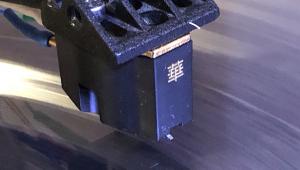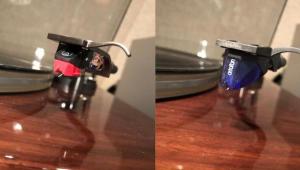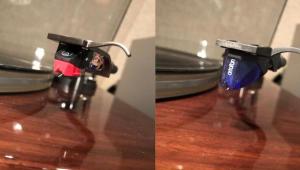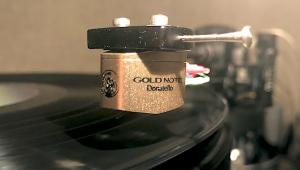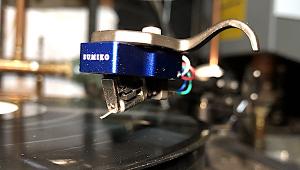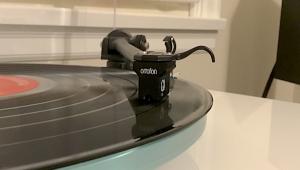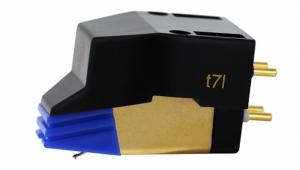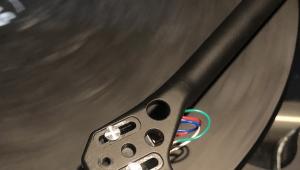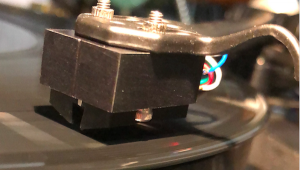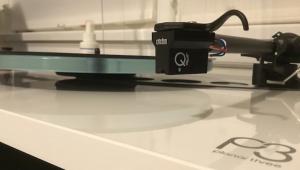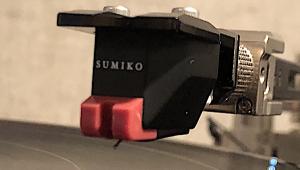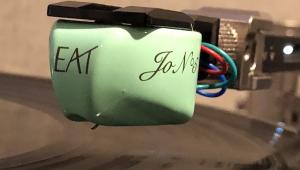KKClub elevates the traditional loyalty program by focusing on creating memorable, personalized experiences that make members feel like they are part of an exclusive community by https://kkclub.pro/ . One of the key aspects that sets KKClub apart is its emphasis on personalization. Every interaction, reward, and offer is carefully curated based on members' preferences and shopping behavior.
Koetsu Urushi MC phono cartridge Page 2
Mr. Sugano no longer has the dexterity for such arduous work and has passed the business on to his sons. Today's Koetsus are built by Fumihiko Sugano. Like father, like son? That's what I wanted to find out.
The Urushi's coils are wound from six-nines copper (99.9999% pure). The magnet system is samarium/cobalt, while the cantilever and bobbin (around which the coils are wound) are made from that "special metal." All that Koetsu will say about the stylus is that it is specially designed for them. The more pricey Koetsus use a platinum alloy magnet and silver-clad six-nines copper wire. "Cladding" is different from "coating": the hollow silver is slowly and painstakingly slipped over the copper inch by inch, manually. The Urushi is a snazzy looker: a black-lacquered block patterned with wavy gold glitter. Unlike most modern designs, which feature convenient tapped and threaded mounting holes, the Urushi requires nuts. Output is high for a low-output moving-coil: 600µV (1kHz at 5cm/s).
Setup & Sound
I auditioned the Koetsu cartridge extensively (such work!) in the Immedia RPM2, Graham 2.0, and Simon Yorke arms. For the sake of quick back-and-forths and to hear the effects of different arm wires, I did most of my final A/B listening using the Graham 2.0.
First of all, throw out all the clichés you may have heard about this cartridge maker. The Koetsu is not "soft and rolled" on top, nor does it have a warmth-inducing midbass hump.
This cartridge did everything described in this review's introduction. You pay the big bucks for ease and grace—and freedom from "mechanicalness"—and you get them. I did, anyway. The Urushi was dynamically and spatially explosive, creating an accurately shaped soundstage that had no connection to the loudspeakers. It focused three-dimensional images everywhere on the stage, and resolved incredible amounts of low-level and harmonically adjacent information.
For example, on The Beatles, at the end of "The Continuing Story of Bungalow Bill," everyone's singing "Hey, Bungalow Bill..." Can you easily hear that it's Ringo's nasal, three-dimensional voice singing in the background? Like the Lyra Paranassus D.C.t that I also review this month, the Koetsu didn't just pass on low-level information, it served it up on a platter.
Not that these two fine performers sounded identical. They didn't. The tonal clichés were reduced to "tendencies." The Koetsu was slightly richer in the lower midrange, which made strings "sing" with a rich, vibrant, ever-spreading glow. The Parnassus D.C.t gave me more of the bow, a bit less of the body. On Sinatra's At the Sands—a fantastic Lowell Frank recording—the D.C.t gave me more of the live event (the nightclub ambience and PA sound), the Koetsu more of Frank's direct mike feed—a more intimate Frank, but with less of the context.
It is precisely because both cartridges were so revealing that different arm cables, loadings, and slight changes in setup had such profound effects, and could even make one cartridge almost mimic the other.
The title cut from a British RCA pressing of David Bowie's The Man Who Sold the World is a really fine Ken Scott Trident Studios four-track recording. (Forget the digitally remastered Rykodisc LP.) In the left channel are a guiro "scratcher," a wood block, and a processed electric guitar; in the right channel are an acoustic rhythm guitar and, way in the background but very cleanly recorded, the drums: long tom and snare runs punctuated by rich, splashy cymbal work. In the middle are Bowie—slightly flanged or processed some other way—the bass, and what sounds like a primitive analog synthesizer.
Using Cardas' new Neutral Reference tonearm cable (speaking of throwing away clichés, there's nothing soft and warm about this cable; it's superbly transparent and extended on top), the Parnassus D.C.t delivered the scratcher with a perfect balance of gourd and percussive etch as the striker rides along the instrument's undulating ridges. The woodblock "popped" cleanly and warmly. Bowie's voice rippled with the flange effect. In the right channel, the acoustic guitar strums had both string and body, and the cartridge delivered the complex timbre and tonality of the drums intact. The distant cymbals splashed and shimmered with incredible texture even as they decayed into blackness. Despite its obscure placement in the mix, I could easily listen to just the drum performance for the full song and hear a low-level but tonally rich, dynamically convincing portrayal of the instrument.
Switching to the Koetsu, the scratcher's percussive etch was ever so slightly diminished in speed, but the hollowness of the gourd was revealed in somewhat greater relief. The woodblock "popped" a bit less quickly, but with a bit more wood sound. Bowie's voice lost a touch of the flange effect, the acoustic guitar revealed a bit more body and a little less string, the toms were rounder, the snare a hair less distinct, the cymbals lost some shimmer and "splashiness," and the performance was slightly obscured dynamically by the rest of the mix.
The Koetsu had outstanding bass response—deep, tight, rich, and complex—but this richness did not come at the expense of bass definition or control. Overall, though, the D.C.t's bass was somewhat tighter and more explosive, the Koetsu's richer and somewhat slower.
I auditioned both cartridges with a variety of arm cables. Depending on the choice, I could tamp down and soften the Parnassus' top-end extension and make it resemble the Koetsu's slightly warmer overall tonality, but not its subtly lush lower midrange. Some cables obscured the cymbal splashes on the Bowie cut to where I was hardly aware of them. A capacitance issue? Perhaps. In any case, what I heard with any of these revealing cartridges was, to a great degree, related to associated equipment, setup, and loading.
Speaking of which, I tried both with the preamp set to 47k ohms but preferred 100 ohms. In most cases I still think a moving-coil cartridge needs to be loaded down to prevent ringing. Ultimately, you have to let your ears be the judge—but don't confuse distortion (underdamped ringing) with spatiality.
The subtle tonal difference between the cartridges had a predictable effect on soundstaging and imaging. The D.C.t provided an airier, taller stage, with greater rear-stage "spotlighting." The Koetsu's warmer, richer balance provided a somewhat "wetter" sensation of air, as if the event had been recorded on a more humid day. Soundstage height was somewhat lower, but there was a greater sensation of depth in the corners.
Some may argue with this assessment, saying, "What really counts is which is more accurate to the sound of the venue in which the recording was made." But that depends to a large degree on the tonal balance and imaging and soundstaging abilities of not just the cartridge, but the rest of the system as well. That one cartridge/speaker combination adds up to a balance that accurately portrays the venue of a particular recording does not necessarily mean that the cartridge is more "accurate"—except in that system.
While the Koetsu wasn't soft and overly warm and the Parnassus D.C.t wasn't bright and aggressive—these two cartridges are way too refined and carefully "voiced" to be so unsubtle about their overall sonic "tendencies"—those who value transparency, "speed," retrieval of inner detail, and stolid but exciting neutrality will prefer the Parnassus D.C.t's fast, energetic portrayal of transients, reverberant tails, and spatial cues.
Those who place greater value on image solidity and three-dimensionality, harmonic richness, liquidity, and tonal opulence—a light honey cast that makes strings, reeds, and vocals sing and seem to "open up" like a great vintage wine—will gravitate toward the Koetsu. The Koetsu is a "planar magnetic" or "ribbon"-like transducer, and one of the two most liquid cartridges I've yet auditioned (the other being the Crown Jewel). And for longtime Koetsu fans, I'm happy to say the new Urushi sounds very similar to the vintage one I auditioned over a year ago.
What's really impressive about these cartridges is that both have enough of the other's strong suits to make them enjoyable, regardless of your sonic preferences. The Koetsu was particularly engaging on the Heifetz and Ricci records, but the D.C.t was also credible, with just a slight shift of emphasis. The D.C.t was more convincing on live recordings, conveying more of the room sound and atmosphere—the D.C.t was the cartridge on the Sinatra record—but the Koetsu was "lively" enough to be exciting. It could rock, too, though not quite as dynamically.
Nonetheless, there are some cautions: On a warm, lush, soft-sounding, all-tube system coupled with planar magnetic speakers—I'm thinking of the systems George Cardas used to bring to CES—the Koetsu might be too much of a good thing.
Conclusion
The Koetsu Urushi is hand-built by a skilled artisan who push, pull, and bend thise baby into submission before it reaches your hands. it comes in a cool box, is made from exotic materials, has great snob appeal, and will give you pride of ownership. Like the Parnassuss D.D.t, the Urushi has a special ether that can be seen only under particular, mysterious conditions I'm not allowed to divulge. And again like the Parnassus, the Koetsu will cause anxiety attacks during installation and with each play. But if you treat it right, it'll do likewise, and give you years of listening pleasure.
The Koetsu demands ultra-rigid-bearing tonearms and medium- to high-mass arms to perform at its peak—and meticulous setup. Sloppy bearings and resonances will accentuate the essential and positive characters in negative ways: the Koetsu will sound sluggish and unfocused. If you hear those qualities, the fault lies elsewhere!
- Log in or register to post comments




